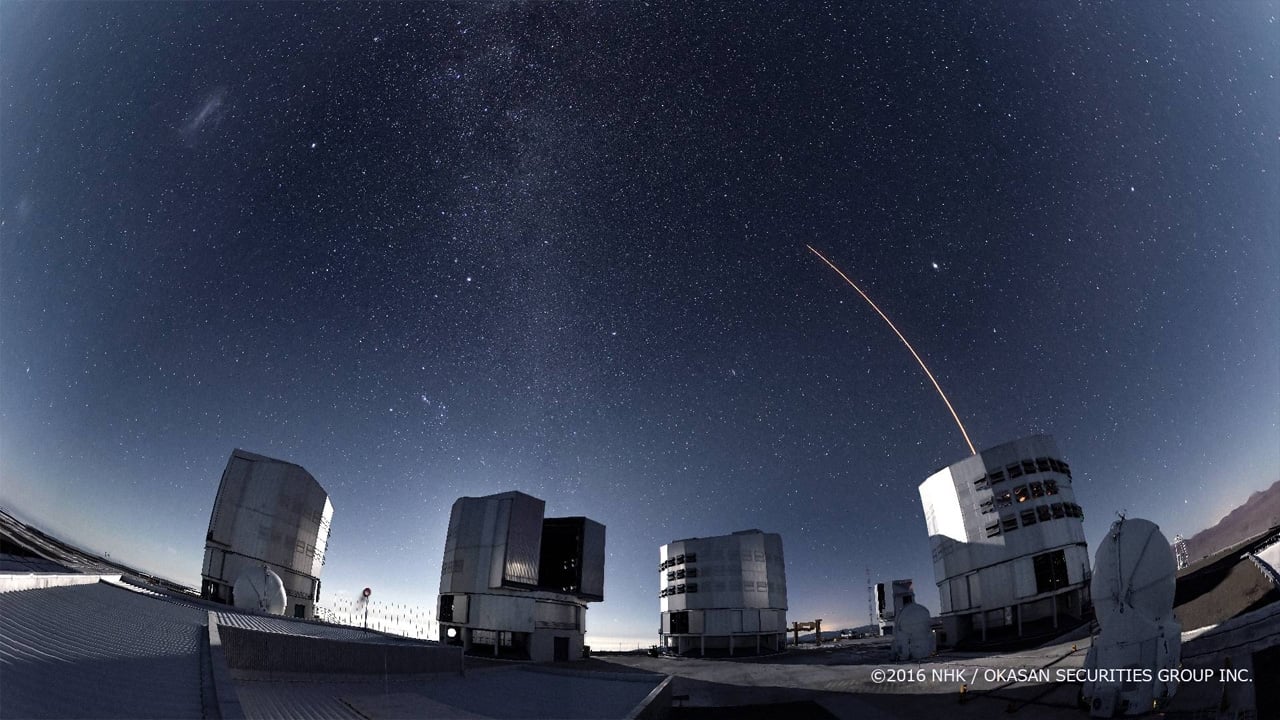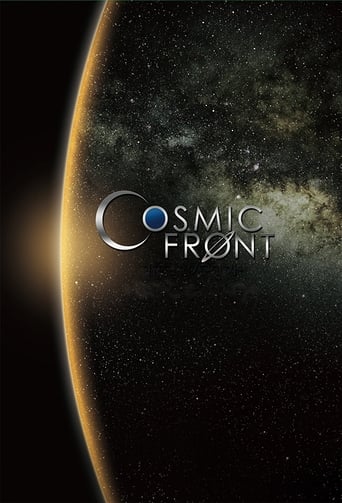Cosmic Front Season 1

Explore Magellanic Clouds, Black Holes, Asteroids and other phenomena of the universe in the Cosmic Front series.
Watch NowWith 30 Day Free Trial!
Cosmic Front
2011
Explore Magellanic Clouds, Black Holes, Asteroids and other phenomena of the universe in the Cosmic Front series.
Watch Trailer
With 30 Day Free Trial!
Cosmic Front Season 1 Full Episode Guide
The terraforming of Mars is the process by which man would transform the barren land of Mars into a new, Earth-like planet capable of sustaining life. According to Dr. McKay of the NASA Ames Research Center, this could become reality as early as 100 years from now. Artificial microorganisms created with the latest techniques in synthetic biology would be used to produce resources such as iron, energy, and food directly on the planet itself. This episode of COSMIC FRONT reveals the details of this megaproject by using images created based on the most up-to-date potential scenarios.
The Orion Nebula is a beautiful sight in the night sky. One of the visionaries behind the Hubble Space Telescope, Dr. Robert O'Dell, has been studying Orion for more than 50 years. When he and his team focused Hubble on Orion, they discovered that the nebula is a giant stellar nursery giving birth to new stars and planets. Their groundbreaking research also revealed the three-dimensional shape of the nebula and the actual location where stars are formed. Based on this research, a dynamic CGI reconstruction of the Orion Nebula takes us on an exciting adventure deep inside this stellar nursery to witness stars and planets dramatically bursting into existence.
Could Mars have ever harbored life? Thanks to NASA's latest Mars rover Curiosity, scientists are finding clues to this profound question since the rover made an extraordinary landing on the red planet in August 2012. For the first time in Mars exploration, Curiosity drilled into Martian rocks and investigated the subsurface chemistry in detail. It turned out that underneath the highly oxidized red surface was "grey Mars" material determined to have life-supporting potential. This program tracks the first year of Curiosity's adventure, and confirms an ancient environment to support life on Mars.
About a decade ago, a mysterious bronze disk with astronomical markings was discovered in Germany. It's 30 centimeters in diameter and 5 centimeter thick and is inlaid with gold decorations of the sun, the moon and stars. Named the Nebra Sky Disc after the place where it was found, this disk is surprisingly old. Studies suggest it was made some 3,600 years ago. Furthermore, the latest scientific analyses of the designs embossed into it revealed the amazing astronomical knowledge of ancient people. The hidden mysteries of the world's oldest known astronomical device are now coming to light.
Countless stars illuminate the night sky. In our galaxy alone, there are over 100 billion stars. It's believed that immediately after the universe was created, there wasn't even a single star. There was only darkness. The "First Stars" that sparkled in space ended this Dark Age. Recent research has revealed that these stars dramatically changed the nature of the universe. The universe, as we know it now, with galaxies, planets and life, was created by these great stars. Get ready for new revelations about the first stars.
Even with a surface temperature of -180ºC, Saturn's moon, Titan, could be another Earth. It rains liquid methane from its icy cold skies. There's evidence of lakes filled this liquid methane. There are other surprising phenomena found on Titan's surface -- dunes made of enormous quantities of organic material that could contain the building blocks for DNA, as well as volcanoes that spew plumes of viscous "lava" composed of super-cooled water mixed with ammonia. Today, astrobiologists are conducting studies on the possibility that life could be present on Titan. This program reveals the latest findings about one of Saturn's most fascinating moons.
Monster black holes contain several million to ten billion times the mass of our Sun. They've been discovered in the center of many galaxies, each with their own hundreds of billions of stars. Observations have shown that the mass of monster black holes stands in proportion to the mass of their galaxies. Scientists have begun to believe that these giant black holes are the key for understanding how galaxies emerged and developed throughout the history of our 13.7 billion-year-old universe. The latest astronomical observations illustrated by magnificent computer graphics close in on the essence of these monster black holes.
Were "little green men" trying to contact us? Over 40 years ago, extremely constant pulses were detected reaching the Earth from outer space. It caused a great sensation. Speculation was that the signals were coming from intelligent life somewhere in outer space. Scientists conducted careful investigations but they couldn't identify the source. It was later found that these signals were coming from newly discovered stars called pulsars. What exactly are these curious stars? Using dynamic CG images, we provide a fascinating look at the challenges scientists face in investigating these unusual stars.
The Large and Small Magellanic Clouds, luminous in the night sky of the Southern Hemisphere, are celestial bodies shrouded in mystery, but recent observations have revealed some startling facts about them. They are survivors of galaxies formed in the early stages of the Universe.
In the summer of 1969, Apollo 11 succeeded in being the first manned mission to land on the moon. The next challenge was to develop a lunar rover that would allow astronauts to explore the moon's vast surface. However, the project was met with numerous problems. How would they build a lunar rover that would fit in the small space of the lunar module? How would they design tires that would be both light and strong? The team of engineers only had a year and a half to complete the first vehicle. The untold story behind the development of the lunar rover, said to be the final hurdle of the Apollo project, is revealed using valuable historic footage.
With their relentlessly powerful gravitational pull, black holes suck in anything that comes near them: not even light can escape. They were first discovered not by direct observation but through the human power of logical analysis. However, the very existence of black holes was the subject of heated debate for about half a century. This episode introduces the latest research into the strange physical phenomena caused by black holes and an experimental method for directly viewing these invisible celestial bodies. It is the story of dedicated scientists in a quest to see the "unseeable".
An astral body colliding with the Earth is not a Hollywood fantasy. NASA estimates that some 20,000 small astral bodies could smash into the Earth. Any one of these impacts could pose a serious threat to civilization. Observatories around the world are working together to protect our planet. They scan the universe to detect potentially dangerous asteroids as early as possible. NASA is also studying how the paths of asteroids could be changed to prevent them from hitting the Earth. This episode looks at the frontline research being carried out to better understand the little-known phenomenon of astral collision and prevent a potentially catastrophic impact with the Earth.
In the summer of 2011, the Space Shuttle fleet was retired after leading international missions for three decades. Despite two tragedies, the Space Shuttle rose like a phoenix from its ashes to realize humankind's dream of space exploration. Its notable missions included providing crucial support to the construction and maintenance of the Hubble Space Telescope and the International Space Station. Behind the development and operation of the Space Shuttle project was a history of struggles unknown to the public. This program traces both the glory and tribulations of the Space Shuttle, and how it helped broaden our view of the possibility of space travel.
Betelgeuse is a first-magnitude red star in the Orion constellation. This massive star -- 1,000 times the size of the Sun -- is aging and facing imminent death. The latest observations show what appears to be a huge bump on one side of the star, and giant plumes of gas spewing out with ferocious force. Scientists predict Betelgeuse will soon meet its end in a huge explosion. They say that viewed from Earth three hours after this explosion, the supernova will appear almost 100 times brighter than a full moon, and be visible even during the day. As it nears the end of its life, this red supergiant star is grabbing the attention of scientists around the world.
Telescopes on six solar observation satellites are currently monitoring the sun. The satellites include Japan's Hinode and the SDO developed by the United States. Solar activity (flares, sunspots) is at its lowest since modern observation began - what implications does this have for our Earth?
Material called "dark matter" could hold the key to understanding the creation of the universe. Although its composition is completely unknown, dark matter is believed to have more than five times the mass of existing elements like hydrogen and oxygen. Using highly specialized observation devices, scientists around the world are vying to be the first to uncover the secret of dark matter. How do these scientists form their hypotheses and attempt to validate them? Will they ever find out what dark matter is? This program focuses on this fascinating competition among some of the world's top scientists.
Extraterrestrial life = Science Fiction. Not so fast! -- the Cassini probe has provided photos of Enceladus, where scientists have found geysers of water vapor. And then there is Gliese 581g, a planet with Earth-like conditions....what would life forms look like in these watery environments?
The Hubble Space Telescope (HST) orbits 600 kilometers above the Earth's surface, beyond the planet's image-distorting atmosphere. It provides clear images of our universe and can even take vivid photographs of galaxies with hundreds of billions of stars at the outer reaches of the cosmos. Recently over 100 scientists from around the world gathered for the most ambitious HST observation project to date. They were trying to work out the structure of the galaxies. Near Earth, many galaxies are clustered together like soap bubbles. Will these bubbles continue expanding far into the universe? Using the HST, scientists at the frontline of space exploration try to find the answer.
Free Trial Channels
Seasons


























